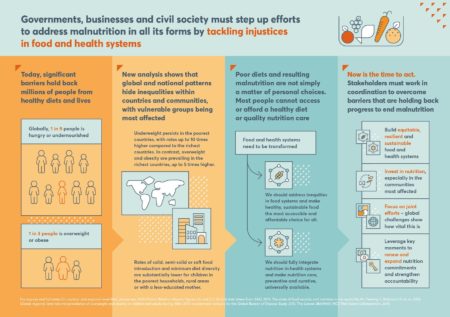This year’s Global Nutrition Report came out yesterday. It calls for…
…a pro-equity agenda that mainstreams nutrition into food systems and health systems, supported by strong financing and accountability. With only five years left to meet the 2025 global nutrition targets, time is running out. We must focus action where the need is greatest for maximum impact.

That includes actions centred around increasing dietary diversity, especially for kids. Prabhu Pingali’s Spotlight 4.1 section of the report shows that more attention to non-staples crops can be a valuable approach for that.
Spotlight 4.1 shows that virtually all the increase in food energy (calories) from 1970 to 2010 is accounted for by non-staple crops, which are relatively more nutrient-dense. The proportion of calories from sugars and sweeteners has declined since 1970. This positive trend highlights the need for a more balanced policy and research and development focus on non-staple crops, to support producers to diversify. This in turn could improve the diversity of crops contributing to a balanced and healthy dietary composition.
Pity this important insight hasn’t found its way in much of the media coverage.
